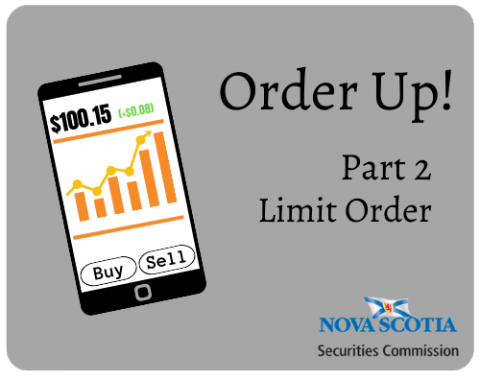Submitted by nsscadmin on

Welcome back for Part 2 in our series on common orders. If you missed Part 1 on Market Orders, you can catch up here. Part 2 looks at Limit Orders.
A limit order may also be referred to as a pending order. When you place a limit order you are setting the approved price to purchase or sell shares. A limit order will only be executed if the set price is reached.
Let’s look at an example of a limit order set up to purchase shares. Let’s say you have an eye on a specific share at a specific price. The shares are currently priced at $15 per share, but you are interested in purchasing them at $13 per share. You place a limit order to purchase 100 shares at $13 per share for $1300. Once the limit order has been received it will remain in place until it’s cancelled, expires, or the share price falls to $13 and the order is executed.
One other thing to remember about purchase limit orders is that your order sets the maximum price you will pay for the shares. If in our example the price fell from $15 to $12.95 and bypassed $13 altogether you would be able to purchase them at the lower price of $12.95.
When selling through a limit order it works the same way except it executes at a given price or higher. Let’s say you own 100 shares of Company X that is currently priced at $20 per share. If you set a sell limit order at $25 per share you will sell if the stock reaches $25 or higher.
One last thing to remember about Limit Orders is that if you set your limit too low or too high your order may never execute, or you may end up selling much lower than the stock eventual value. Be sure you understand the risks involved with limit orders before making any trades.
Next week we’ll finish off our orders series with Stop Loss Orders.
